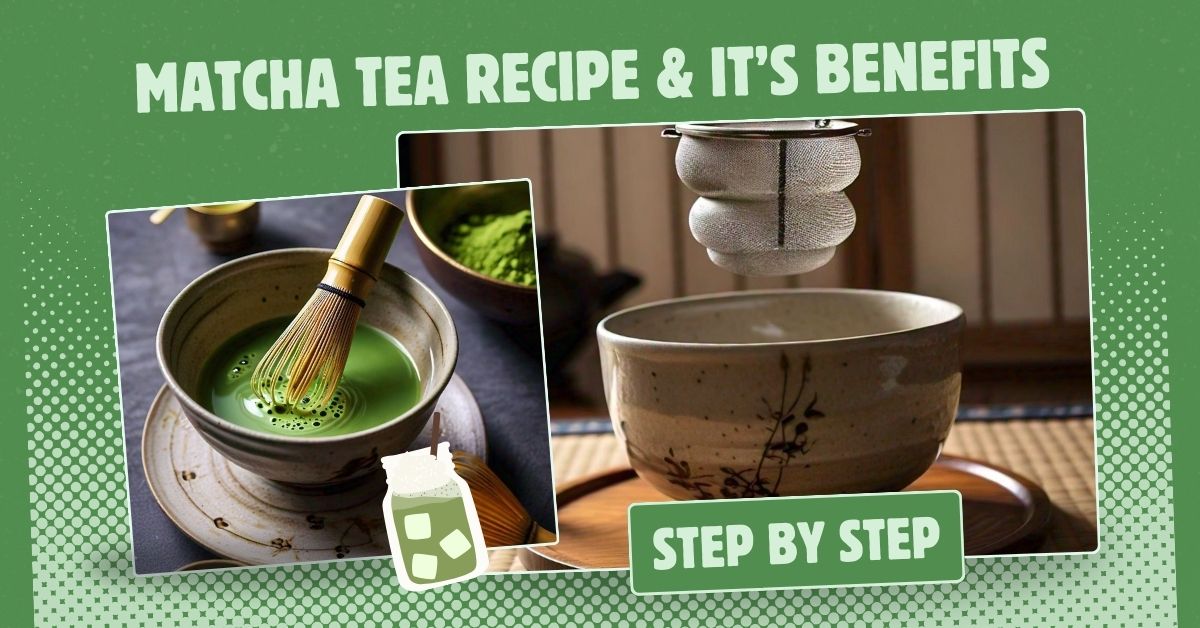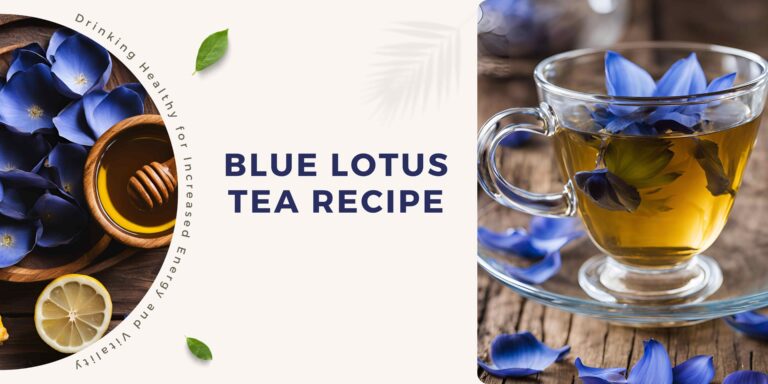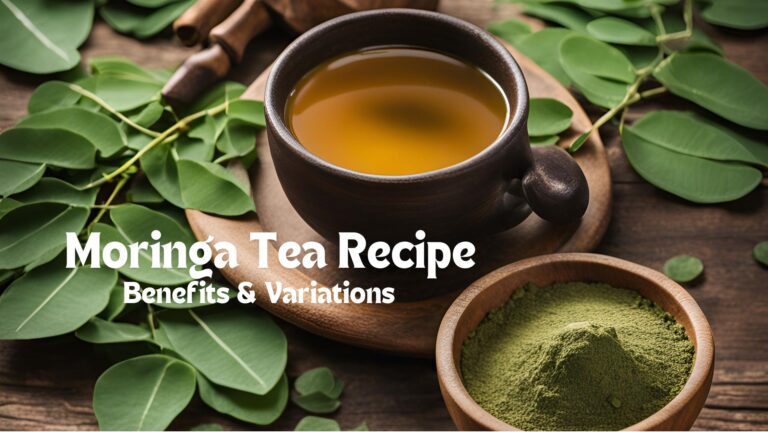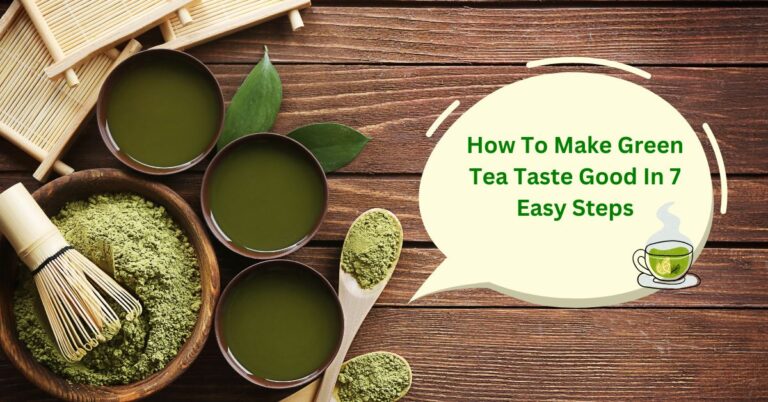In recent years, tea has taken center stage in the world of health and wellness, captivating hearts with its soothing aroma and myriad benefits. One variety, in particular, has gained significant attention for its vibrant green color and powerful health properties Matcha tea. Known for centuries in Japan as a ceremonial drink, Matcha tea is now being embraced globally by health enthusiasts and tea lovers alike.
But what makes Matcha tea so special? In this blog, we’ll uncover what Matcha tea is, its unique ingredients, how to make it, and the comparison between Matcha tea and green tea. Plus, we’ll explore its benefits, different variations, and some essential tips and precautions you need to know.
What is a Matcha Tea?
Matcha tea is a type of powdered green tea made from finely ground, specially grown, and processed green tea leaves. Unlike regular green tea, where leaves are steeped and then discarded, Matcha involves consuming the whole tea leaf, delivering a concentrated source of antioxidants, vitamins, and minerals.
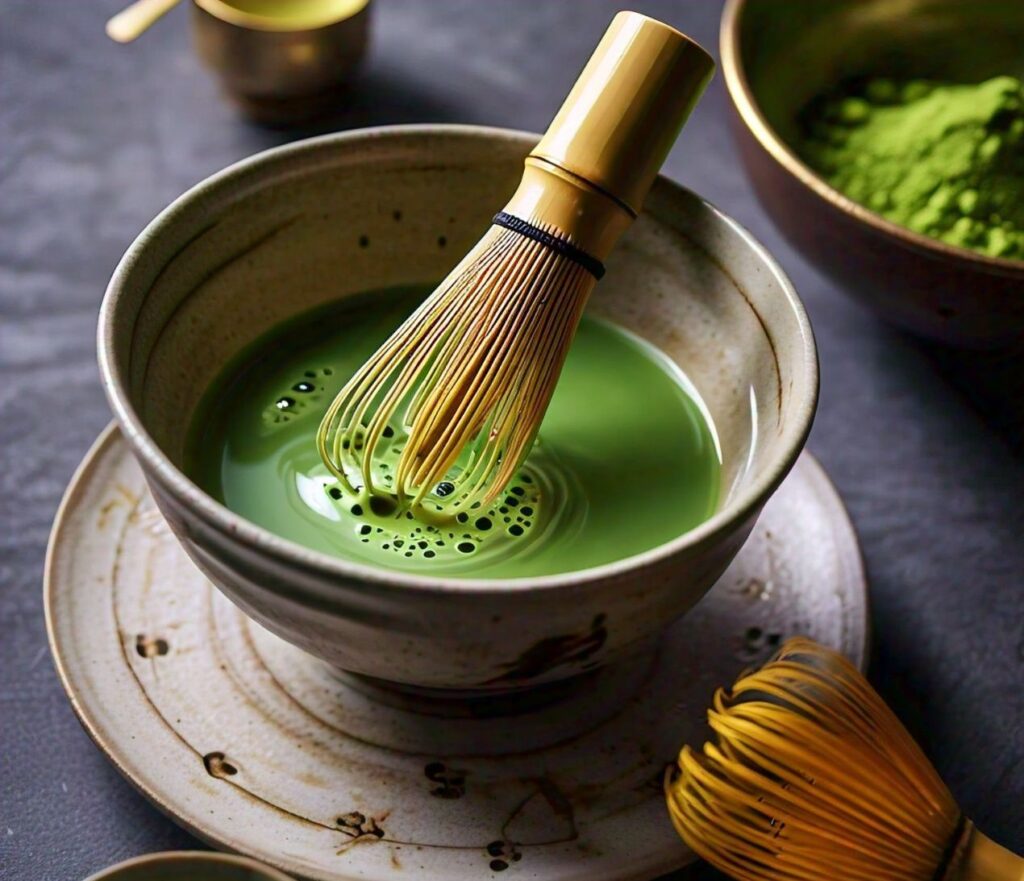
The tea plants are shade-grown for about three weeks before harvest, increasing the chlorophyll content and giving the leaves their distinct vibrant color. Once harvested, the leaves are stone-ground into a fine powder that is then whisked into hot water to make the traditional tea.
Also Read – Red Tea Shots Recipe
Matcha Tea Ingredients – What’s in a Matcha Tea?
When it comes to Matcha tea, simplicity is key. In this section, we’ll learn what’s inside a typical Matcha tea.
Ingredients:
- Matcha Green Tea Powder: Finely grounded from high-quality green tea leaves.
- Hot Water: It is essential to dissolve the Matcha powder and bring out its flavors.
- Optional Sweeteners: Honey or agave syrup can be added for a touch of sweetness.
- Milk (Optional): For those who prefer a Matcha latte, milk (dairy or plant-based) is a popular addition.
What equipment is required to make matcha green tea?
Making Matcha tea traditionally requires a few specialized tools, though modern versions can be made with simpler equipment. Here’s what you’ll need:
- Chawan (Tea Bowl): A wide bowl used to whisk the Matcha powder.
- Chasen (Bamboo Whisk): The traditional whisk made from a single piece of bamboo, is used to create the frothy texture in the tea.
- Chashaku (Bamboo Scoop): A delicate scoop to measure out the perfect amount of Matcha powder.
- Sifter ( strainer ): To avoid clumping, sifting the Matcha powder before whisking is essential.

Also Read – White Tea Shot Benefits
Matcha Tea Recipe in 5 easy steps
Making Matcha tea is a simple yet mindful process. Here’s a quick guide:
- Put 1-2 teaspoons of Matcha powder into a bowl using a fine strainer.
- Heat water to about 80°C (not boiling).
- Add 2 ounces of hot water to the bowl.
- Whisk the mixture briskly using the bamboo whisk, moving in an “M” or “W” shape until a frothy top forms.
- Optional: Add sweeteners or milk for a Matcha latte.
Matcha Tea vs Green Tea
While Matcha tea and regular green tea come from the same plant—Camellia sinensis—they are distinct in many ways.
Ingredients: Traditional green tea involves steeping the leaves, whereas Matcha tea uses the entire leaf, providing a higher concentration of nutrients. The powder form of Matcha ensures you get 100% of the leaf’s benefits, while in regular green tea, many of the nutrients remain in the discarded leaves.
Flavor: Matcha has a bold, earthy flavor with a slight sweetness, while green tea tends to be lighter and more plant-like.
Caffeine: Matcha offers a higher caffeine content compared to regular green tea, providing calm alertness due to the presence of L-theanine, an amino acid that promotes relaxation without drowsiness.
Also Read – Green Tea Shot Recipe
Benefits of Matcha Tea
Matcha tea is packed with health benefits. Here are a few of the top reasons to incorporate it into your daily routine:
- Rich in Antioxidants: Matcha contains a high concentration of antioxidants, particularly catechins, which help neutralize harmful free radicals.
- Boosts Metabolism: The catechins in Matcha have been shown to enhance fat oxidation, making it a popular choice for those looking to boost metabolism and support weight loss.
- Enhances Focus and Calm: Thanks to its balanced combination of caffeine and L-theanine, Matcha provides a calming energy boost, ideal for maintaining focus.
- Detoxifies Naturally: Matcha is rich in chlorophyll, which is known to help detoxify the body by removing heavy metals and chemicals.
- Supports Heart Health: Regular consumption of Matcha tea may help lower cholesterol and blood pressure, contributing to better cardiovascular health.
Variations of Matcha Tea
Here are some popular variations of Matcha tea you can try:
- Matcha Latte: A creamy variation made with steamed milk and Matcha powder.
- Iced Matcha: Perfect for summer, this version uses chilled water and ice cubes.
- Matcha Smoothie: Blend Matcha with fruits and almond milk for a refreshing, energizing smoothie.
- Matcha Lemonade: A citrusy twist, combining lemon juice, water, and Matcha powder for a tangy and refreshing drink.
- Matcha Energy Balls: For a snack version, mix Matcha powder with oats, nuts, and honey to form energy balls.
Also Read – How To Make Tea In Microwave
Limitations and Precautions of Matcha Tea
Although Matcha tea is generally safe, there are a few limitations and precautions to consider:
- High Caffeine Content: Consuming too much Matcha may lead to side effects like insomnia or headaches, especially for those sensitive to caffeine.
- Heavy Metal Contamination: Since Matcha involves consuming the whole leaf, there’s a risk of heavy metal contamination. Make sure to source high-quality Matcha.
- Tannins and Iron Absorption: Like other teas, Matcha contains tannins, which may inhibit iron absorption. It’s recommended to avoid drinking it around mealtime if you’re iron-deficient.
Also Read – Black Tea Shots Recipe
Matcha Tea Recipe
Equipment
- Chawan (Tea Bowl): A wide bowl used to whisk the Matcha powder.
- Chasen (Bamboo Whisk): The traditional whisk made from a single piece of bamboo, is used to create the frothy texture in the tea.
- Chashaku (Bamboo Scoop): A delicate scoop to measure out the perfect amount of Matcha powder.
- Sifter ( strainer ): To avoid clumping, sifting the Matcha powder before whisking is essential.
Ingredients
- Matcha Green Tea Powder: The star of the show finely ground from high-quality green tea leaves.
- Hot Water: It is essential to dissolve the Matcha powder and bring out its flavors.
- Optional Sweeteners: Honey or agave syrup can be added for a touch of sweetness.
- Milk Optional: For those who prefer a Matcha latte, milk (dairy or plant-based) is a popular addition.
Instructions
- Put 1-2 teaspoons of Matcha powder into a bowl using a fine strainer.
- Heat water to about 80°C (not boiling).
- Add 2 ounces of hot water to the bowl.
- Whisk the mixture briskly using the bamboo whisk, moving in an “M” or “W” shape until a frothy top forms.
- Optional: Add sweeteners or milk for a Matcha latte.
Notes
FAQs
1. How many calories are in Matcha Tea?
A typical serving of Matcha tea contains about 5-10 calories.
2. How much caffeine is in the Matcha Tea?
A cup of Matcha tea typically contains 60-80 mg of caffeine.
3. Can I drink a Matcha Tea every day?
Yes, Matcha tea is safe to drink daily in moderation. However, its high caffeine content should be considered.
4. Is it safe during pregnancy?
Consult with your healthcare provider, as high caffeine levels in Matcha may not be ideal during pregnancy.
5. What is Matcha Tea made out of?
Matcha tea is made from powdered green tea leaves, usually from shade-grown Camellia sinensis plants.
6. Why is Matcha Tea so expensive?
Matcha tea can be expensive due to the labor-intensive process of growing, harvesting, and grinding the tea leaves.
7. Is Matcha Tea healthy?
Yes, Matcha tea is known for its numerous health benefits, including antioxidant properties and energy-boosting effects.

